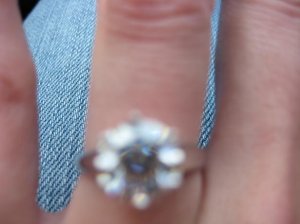- Joined
- Aug 4, 2008
- Messages
- 15,717
Sorry that is not correct when it comes to fancies and somewhat to rounds.Date: 11/14/2009 7:06:42 AM
Author: FB.
Flat crown and flat pavilion = lots of leakage out the bottom. The stone can't help but be dull, although may still be attractive.
Large crown and large pavilion = lots of leakage out the sides. Again, the stone may be dull (especially under the table), but may be attractive to some people, like a GIA steep deep.
While there are angles you don't want to go under is true what your not taking into account is not all faceting styles act the same way.
For example an excellent oec is steep deep compared to an ideal cut RB.
Start here:
http://journal.pricescope.com/Articles/68/1/Do-the-pavilion-mains-drive-light-return-in-the-modern-round-brilliant.aspx
shallow/shallow RB's are some of the brightest (bic), while the brightest princess cuts (ags0) and asschers (Octavia) are on the deep side.
Check out the 10-10-10
https://www.pricescope.com/community/threads/the-perfect-100-the-10-10-10-nightmare-from-storms-computer-2.79900/
and the 2 of hearts:
https://www.pricescope.com/community/threads/introducing-the-2-of-hearts.81451/

Dull? Hardly......












300x240.png)